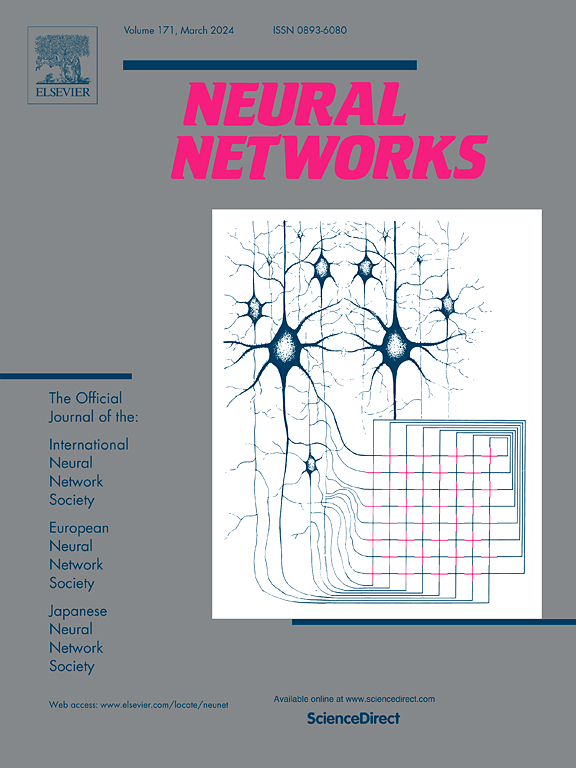Dynamic graph consistency and self-contrast learning for semi-supervised medical image segmentation
IF 6.3
1区 计算机科学
Q1 COMPUTER SCIENCE, ARTIFICIAL INTELLIGENCE
引用次数: 0
Abstract
Semi-supervised medical image segmentation endeavors to exploit a limited set of labeled data in conjunction with a substantial corpus of unlabeled data, with the aim of training models that can match or even exceed the efficacy of fully supervised segmentation models. Despite the potential of this approach, most existing semi-supervised medical image segmentation techniques that employ consistency regularization predominantly focus on spatial consistency at the image level, often neglecting the crucial role of feature-level channel information. To address this limitation, we propose an innovative method that integrates graph convolutional networks with a consistency regularization framework to develop a dynamic graph consistency approach. This method imposes channel-level constraints across different decoders by leveraging high-level features within the network. Furthermore, we introduce a novel self-contrast learning strategy, which performs image-level comparison within the same batch and engages in pixel-level contrast learning based on pixel positions. This approach effectively overcomes traditional contrast learning challenges related to identifying positive and negative samples, reduces computational resource consumption, and significantly improves model performance. Our experimental evaluation on three distinct medical image segmentation datasets indicates that the proposed method demonstrates superior performance across a variety of test scenarios.
用于半监督医学图像分割的动态图一致性和自对比学习。
半监督医学图像分割努力利用有限的标记数据集和大量未标记数据集,目的是训练可以匹配甚至超过完全监督分割模型的效果的模型。尽管这种方法具有很大的潜力,但大多数采用一致性正则化的半监督医学图像分割技术主要关注图像级的空间一致性,往往忽略了特征级通道信息的关键作用。为了解决这一限制,我们提出了一种创新的方法,将图卷积网络与一致性正则化框架集成在一起,以开发动态图一致性方法。这种方法通过利用网络中的高级特性,在不同的解码器之间施加信道级约束。此外,我们引入了一种新的自对比学习策略,该策略在同一批内执行图像级比较,并基于像素位置进行像素级对比学习。该方法有效克服了传统对比学习在识别正样本和负样本方面的挑战,减少了计算资源消耗,显著提高了模型性能。我们在三个不同的医学图像分割数据集上的实验评估表明,所提出的方法在各种测试场景中表现出优异的性能。
本文章由计算机程序翻译,如有差异,请以英文原文为准。
求助全文
约1分钟内获得全文
求助全文
来源期刊

Neural Networks
工程技术-计算机:人工智能
CiteScore
13.90
自引率
7.70%
发文量
425
审稿时长
67 days
期刊介绍:
Neural Networks is a platform that aims to foster an international community of scholars and practitioners interested in neural networks, deep learning, and other approaches to artificial intelligence and machine learning. Our journal invites submissions covering various aspects of neural networks research, from computational neuroscience and cognitive modeling to mathematical analyses and engineering applications. By providing a forum for interdisciplinary discussions between biology and technology, we aim to encourage the development of biologically-inspired artificial intelligence.
 求助内容:
求助内容: 应助结果提醒方式:
应助结果提醒方式:


